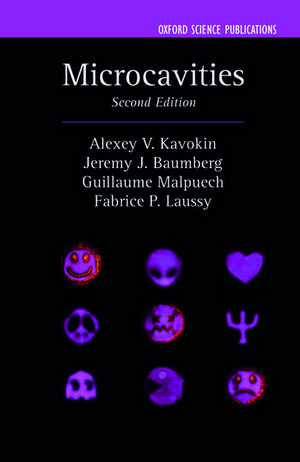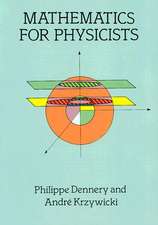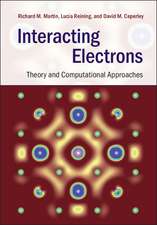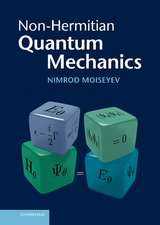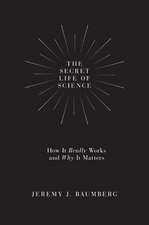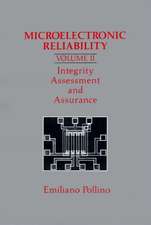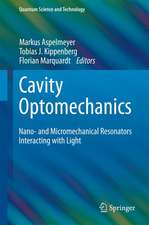Microcavities: Series on Semiconductor Science and Technology, cartea 21
Autor Alexey V. Kavokin, Jeremy J. Baumberg, Guillaume Malpuech, Fabrice P. Laussyen Limba Engleză Hardback – 11 mai 2017
Din seria Series on Semiconductor Science and Technology
- 33%
 Preț: 667.64 lei
Preț: 667.64 lei - 24%
 Preț: 579.71 lei
Preț: 579.71 lei - 24%
 Preț: 523.20 lei
Preț: 523.20 lei - 33%
 Preț: 607.47 lei
Preț: 607.47 lei - 27%
 Preț: 949.55 lei
Preț: 949.55 lei - 34%
 Preț: 1235.37 lei
Preț: 1235.37 lei - 22%
 Preț: 834.00 lei
Preț: 834.00 lei - 34%
 Preț: 1266.73 lei
Preț: 1266.73 lei - 34%
 Preț: 1162.38 lei
Preț: 1162.38 lei - 27%
 Preț: 710.98 lei
Preț: 710.98 lei - 19%
 Preț: 407.48 lei
Preț: 407.48 lei - 27%
 Preț: 675.45 lei
Preț: 675.45 lei - 5%
 Preț: 891.02 lei
Preț: 891.02 lei - 15%
 Preț: 262.57 lei
Preț: 262.57 lei - 31%
 Preț: 505.98 lei
Preț: 505.98 lei - 7%
 Preț: 791.59 lei
Preț: 791.59 lei - 34%
 Preț: 612.31 lei
Preț: 612.31 lei - 34%
 Preț: 717.63 lei
Preț: 717.63 lei - 34%
 Preț: 708.58 lei
Preț: 708.58 lei - 50%
 Preț: 897.57 lei
Preț: 897.57 lei - 50%
 Preț: 1165.82 lei
Preț: 1165.82 lei - 34%
 Preț: 1235.81 lei
Preț: 1235.81 lei - 50%
 Preț: 1151.05 lei
Preț: 1151.05 lei
Preț: 597.80 lei
Preț vechi: 793.69 lei
-25% Nou
Puncte Express: 897
Preț estimativ în valută:
105.78€ • 124.04$ • 92.90£
105.78€ • 124.04$ • 92.90£
Carte disponibilă
Livrare economică 29 ianuarie-03 februarie
Preluare comenzi: 021 569.72.76
Specificații
ISBN-13: 9780198782995
ISBN-10: 0198782993
Pagini: 624
Ilustrații: 239 b/w illustrations and 45 colour illustrations
Dimensiuni: 174 x 236 x 37 mm
Greutate: 1.16 kg
Ediția:2
Editura: OUP OXFORD
Colecția OUP Oxford
Seria Series on Semiconductor Science and Technology
Locul publicării:Oxford, United Kingdom
ISBN-10: 0198782993
Pagini: 624
Ilustrații: 239 b/w illustrations and 45 colour illustrations
Dimensiuni: 174 x 236 x 37 mm
Greutate: 1.16 kg
Ediția:2
Editura: OUP OXFORD
Colecția OUP Oxford
Seria Series on Semiconductor Science and Technology
Locul publicării:Oxford, United Kingdom
Recenzii
Almost every topic of relevance is mentioned, discussed and critically examined. The book is a must for anyone planning for a career in quantum optics-inspired studies in condensed matter, quantum information processing and foundations of quantum mechanics.
A superb and deeply interesting book, Microcavities, will appeal to the novice and the seasoned researcher interested in the physics of exciton-polaritons alike. The topic is presented in a simple, clear yet exhaustive fashion gathering all the essential achievements in the field. In a nutshell, this book bridges the distance between solid state physics, Bose-Einstein condensation and quantum optics, drawing a perfect connection line among these disciplines.
Since its first edition in 2007 Microcavities has proven to be an indispensable tool for graduate students and new comers to the field of exciton-polaritons in semiconductor microcavities. Ten years later, this embellished second edition, with three new chapters that comprise the most recent findings and emerging fields, remains a must in any desk of scientists interested in light-matter coupling and quantum optics.
Reviews from previous edition
This book, part of the Series on Semiconductor Science and Technology, is aimed at undergraduate and graduate students in physics as well as readers with a general physics background. All such readers will benefit greatly from this volume. Students, in particular, will appreciate the short biographical sketches of the giants of physics on whose shoulders the present generation of physicists stand ... Mastering this volume will ensure that the reader is able to fully appreciate the significance of continuing research in microcavities and their applications.
Starting with the basic physics of microcavities, quantum optics, and excitons, the reader is quickly led to the cutting edge of present-day research in a friendly, tutorial style. The book includes biographical sketches of the key personalities, together with a number of amusing cartoons to illustrate the physics, both of which add considerably to its appeal.
A superb and deeply interesting book, Microcavities, will appeal to the novice and the seasoned researcher interested in the physics of exciton-polaritons alike. The topic is presented in a simple, clear yet exhaustive fashion gathering all the essential achievements in the field. In a nutshell, this book bridges the distance between solid state physics, Bose-Einstein condensation and quantum optics, drawing a perfect connection line among these disciplines.
Since its first edition in 2007 Microcavities has proven to be an indispensable tool for graduate students and new comers to the field of exciton-polaritons in semiconductor microcavities. Ten years later, this embellished second edition, with three new chapters that comprise the most recent findings and emerging fields, remains a must in any desk of scientists interested in light-matter coupling and quantum optics.
Reviews from previous edition
This book, part of the Series on Semiconductor Science and Technology, is aimed at undergraduate and graduate students in physics as well as readers with a general physics background. All such readers will benefit greatly from this volume. Students, in particular, will appreciate the short biographical sketches of the giants of physics on whose shoulders the present generation of physicists stand ... Mastering this volume will ensure that the reader is able to fully appreciate the significance of continuing research in microcavities and their applications.
Starting with the basic physics of microcavities, quantum optics, and excitons, the reader is quickly led to the cutting edge of present-day research in a friendly, tutorial style. The book includes biographical sketches of the key personalities, together with a number of amusing cartoons to illustrate the physics, both of which add considerably to its appeal.
Notă biografică
Alexey Kavokin graduated from St-Petersburg Polytechnic University in 1992, PhD in Physics at the Ioffe Institute of Russian Academy of Sciences, 1993. In 1998-2005 he was a professor at the Blaise Pascal University, Clermont-Ferrand, France. Since 2005 he has been Professor and Chair of Nanophysics and Photonics at the University of Southampton, UK. Since 2010 he has been Scientific Director of the Mediterranean Institute of Fundamental Physics (Rome, Italy). He was Principal Investigator at the St-Petersburg State University (2011-2016), and since 2014 he has been Director of Research at the National Council for Research (Italy).Jeremy J. Baumberg FRS directs a UK Nano-Photonics Centre at the University of Cambridge and has extensive experience in developing optical materials structured on the nano-scale that can be assembled in large volume. He is also Director of the Cambridge Nano Doctoral Training Centre. Strong experience with Hitachi, IBM, his own spin-offs Mesophotonics and Base4, as well as strong industrial engagement give him a unique position to combine academic insight with industry application in a two-way flow. With over 15000 citations, he is a leading innovator in NanoScience. This has led to awards of the Royal Society Rumford Medal (2014), IoP Young Medal (2013), Royal Society Mullard Prize (2005), the IoP Charles Vernon Boys Medal (2000) and the IoP Mott Lectureship (2005). He frequently talks on NanoScience to the media, and is a strategic advisor on NanoTechnology to the UK Research Councils.Guillaume Malpuech received an engineering degree from École Centrale de Lyon in 1998, and a PhD in Physics from University Blaise Pascal (UBP) in 2001, Habilitation Thesis (2005). Between 2002-2012 he was a CNRS researcher at LASMEA -- Joint Unity of CNRS and UBP. Since 2005 he has been head of the group of Quantum Optoelectronics at LASMEA. Since 2012 he has been Senior CNRS researcher at the Institut Pascal, and since 2015 head of the Photon department of the institute. He is a known theoretician in the field of polaritonics with a large collaborative activity with leading experimental groups. He worked on polariton based optoelectronic devices, spinor quantum fluids of light, photonic analogues of cosmologic and solid state systems.F.P. Laussy is head of the quantum polaritonic group at the Universidad Autónoma de Madrid (Spain) where he leads the research efforts as the PI of various projects (POLAFLOW, SQUIRREL, CLAQUE). He graduated from Université Blaise Pascal in 2005, after which he obtained post-doc experience in Sheffield, Madrid and Southampton. He was a Marie Curie fellow at the Technische Universität München. He made seminal and pioneering descriptions of microcavity polaritons in their Bose-Einstein condensation, superfluidity, and superconductivity. His research groups recently proposed two new kinds of lights, one quantum -- a laser of N-photon states, emitting all its light in packets of N photons with tunable integer N, -- and the other classical -- Full-Poincaré temporal beams, or pulses of light taking all the states of polarization.
